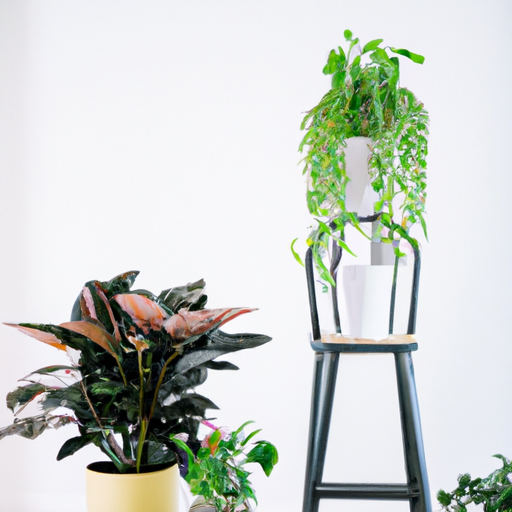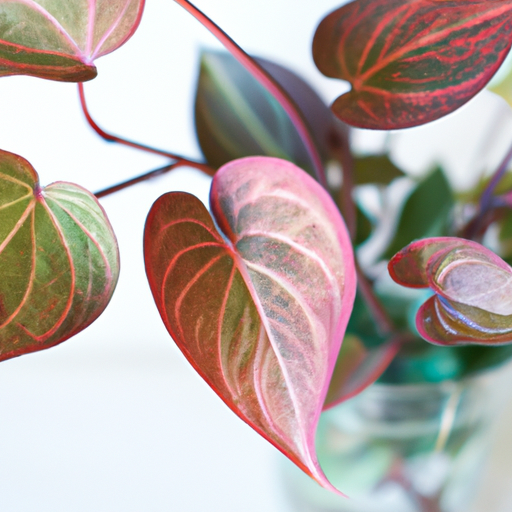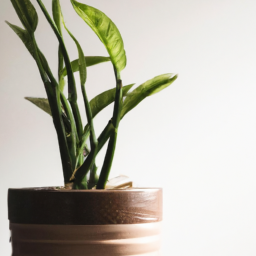
Welcome to our blog post all about potted plants! Whether you’re a seasoned gardener or a newbie in the world of plant care, potted plants are a fantastic addition to any home or office space. From their ability to brighten up a room to their numerous health benefits, potted plants have become increasingly popular in recent years. In this article, we will explore the world of potted plants, providing you with essential tips and tricks to help you choose, care for, and enjoy these delightful green companions. So, if you’re ready to dive into the wonderful world of potted plants, keep reading!
Benefits of Having a Potted Plant in Your Home or Office
Introduction
Adding a potted plant to your home or office can do wonders for your overall well-being. Not only do plants enhance the aesthetic appeal of any space, but they also offer numerous health benefits. From improving air quality to reducing stress levels, potted plants have a positive impact on our physical and mental health. In this guide, we will explore the various benefits of having a potted plant and provide you with a step-by-step guide on how to choose and care for your plants.
Improved Air Quality
One of the most significant benefits of having a potted plant is its ability to improve air quality. Plants naturally absorb carbon dioxide and release oxygen through a process called photosynthesis. This helps to increase the oxygen levels in the air, making it fresher and healthier to breathe. Additionally, plants act as natural air purifiers by filtering out harmful toxins and pollutants present in the environment. Studies have shown that certain plants, such as the Snake Plant and Peace Lily, are particularly effective in removing common indoor pollutants like formaldehyde and benzene.
Furthermore, potted plants can help to regulate humidity levels in a room. They release moisture through a process called transpiration, which can help to combat dry indoor air. This is especially beneficial during the winter months when heating systems tend to dry out the air, leading to respiratory problems and dry skin. By introducing a potted plant to your space, you can create a healthier and more comfortable environment.
It’s important to note that different plants have varying levels of air-purifying abilities. When selecting a potted plant for its air-cleaning properties, consider factors such as the size of the plant, the number of plants needed per square footage, and the specific pollutants you want to target.
Reduced Stress and Increased Productivity
Another advantage of having a potted plant is its positive impact on our mental well-being. Research has shown that being around plants can reduce stress levels and promote relaxation. The presence of greenery has a calming effect on our minds, helping to alleviate anxiety and enhance overall mood. Studies conducted in office settings have found that employees who have plants on their desks or in their workspaces experience lower levels of stress and higher job satisfaction.
Additionally, having potted plants in your surroundings can boost productivity and concentration. The color green has been associated with increased focus and improved cognitive function. By incorporating plants into your home or office environment, you can create a more serene and inviting space that promotes mental clarity and productivity.
To fully harness the stress-reducing benefits of potted plants, it is recommended to have a variety of plants in different shapes, sizes, and textures. This diversity adds visual interest and creates a more natural and harmonious environment.
Enhanced Aesthetics and Ambiance
Potted plants are not only beneficial for our health but also add beauty and charm to any space. They bring a touch of nature indoors, creating a more vibrant and inviting atmosphere. Whether you prefer lush foliage or colorful blooms, there is a wide variety of potted plants to suit every taste and style.
Plants can be used as decorative elements to enhance the aesthetics of your home or office. They can be placed on windowsills, shelves, or even suspended from the ceiling to add visual interest and create a focal point in a room. Additionally, potted plants can help to soften harsh architectural lines and create a sense of tranquility and harmony.
When choosing potted plants for their aesthetic appeal, consider factors such as the color palette of your space, the available light conditions, and the overall style you wish to achieve. Some popular choices for indoor plants include the Fiddle Leaf Fig, Monstera Deliciosa, and Spider Plant.
Conclusion
Incorporating a potted plant into your home or office can provide a multitude of benefits. From improving air quality and reducing stress levels to enhancing the overall aesthetics of a space, plants have a transformative effect on our well-being. By following this step-by-step guide, you can choose the right potted plants for your environment and ensure their proper care and maintenance. So go ahead, bring the beauty of nature indoors and reap the rewards of a greener and healthier space!
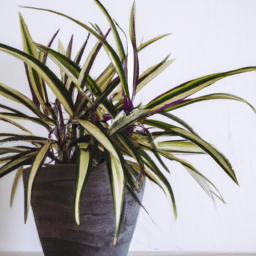
How to Choose the Right Potted Plant for Your Space
Choosing the right potted plant for your space can be an exciting and rewarding experience. Whether you are a seasoned gardener or a beginner, finding the perfect plant that complements your home or office can bring life and beauty to any environment. In this guide, we will walk you through the step-by-step process of selecting the ideal potted plant for your space.
Consider Your Space
Before diving into the world of potted plants, it’s important to assess the space where you intend to place your new green companion. Take a moment to evaluate the lighting conditions, temperature, and available space in your home or office. Understanding these factors will help you narrow down your options and choose a plant that thrives in your specific environment.
Lighting is a crucial aspect to consider when selecting a potted plant. Some plants require direct sunlight, while others prefer indirect or low-light conditions. Observe the natural light patterns in your space and identify areas that receive ample sunlight or shade throughout the day. This will help you determine which plants are suitable for your specific lighting conditions.
Temperature is another important factor to consider. Different plants have different temperature preferences, so it’s essential to choose a plant that can tolerate the temperature range of your space. Some plants thrive in warm environments, while others prefer cooler temperatures. Make sure to research the temperature requirements of your desired plant before making a final decision.
Research Different Plant Varieties
Once you have a clear understanding of your space, it’s time to explore the wide variety of potted plants available. Researching different plant species will give you insight into their care requirements, growth habits, and aesthetic qualities. Consider factors such as the plant’s size, growth rate, maintenance needs, and compatibility with your space.
Start by browsing through plant catalogs, visiting local nurseries, or searching online for plant recommendations. Pay attention to the plant’s mature size and ensure it fits well within the available space. Some plants may require regular pruning or repotting, so consider whether you are willing to invest time and effort into their maintenance.
Additionally, think about the overall aesthetic you want to achieve with your potted plant. Do you prefer a plant with vibrant flowers, lush foliage, or a unique shape? Consider how the plant’s colors, textures, and form will complement your existing decor and enhance the overall ambiance of your space.
Assess Care Requirements
Before finalizing your decision, it’s crucial to understand the care requirements of the potted plant you have in mind. Each plant has specific needs when it comes to watering, fertilizing, and general maintenance. Assessing these requirements will help you determine whether you can provide the necessary care for your chosen plant.
Start by researching the watering needs of your plant. Some plants prefer consistently moist soil, while others require a more well-draining medium. Consider your own schedule and lifestyle to ensure you can commit to the plant’s watering routine. Overwatering or underwatering can harm your plant’s health, so it’s essential to find a balance that works for both you and the plant.
In addition to watering, fertilizing is another aspect to consider. Some plants benefit from regular feeding with specific types of fertilizers, while others may require minimal or no fertilization. Understand the nutritional needs of your chosen plant and determine whether you are willing to provide the necessary nutrients to support its growth.
Lastly, consider the maintenance requirements of the plant. Some plants are more prone to pests or diseases and may require regular monitoring and care. If you prefer low-maintenance plants, look for varieties that are known for their resilience and ability to thrive with minimal intervention.
By carefully considering your space, researching different plant varieties, and assessing care requirements, you can confidently choose the right potted plant for your space. Remember to enjoy the process and embrace the beauty and tranquility that plants bring to our lives.

Essential Care Tips for Maintaining a Healthy Potted Plant
As an expert in potted plants, I understand the importance of providing the right care to ensure their health and longevity. Whether you are a seasoned gardener or a beginner, these essential care tips will guide you in maintaining a healthy potted plant.
Choosing the Right Pot and Soil
When it comes to selecting a pot for your potted plant, there are a few factors to consider. Firstly, ensure that the pot has drainage holes at the bottom to prevent waterlogged roots. This allows excess water to drain out, preventing root rot. Additionally, choose a pot that is the appropriate size for your plant. A pot that is too small may restrict root growth, while a pot that is too large can lead to overwatering.
Equally important is selecting the right soil for your potted plant. Opt for a high-quality potting mix that is well-draining and nutrient-rich. Avoid using garden soil, as it tends to be heavy and may not provide adequate drainage. Look for potting mixes specifically formulated for indoor or outdoor potted plants, depending on your plant’s requirements.
Once you have chosen the right pot and soil, it’s time to move on to the next step in maintaining a healthy potted plant.
Watering and Moisture
Watering is a crucial aspect of caring for potted plants. However, it’s important to strike a balance, as both overwatering and underwatering can harm your plant. The frequency of watering depends on various factors such as plant type, pot size, and environmental conditions.
Before watering, always check the moisture level of the soil. Insert your finger about an inch deep into the soil. If it feels dry, it’s time to water your plant. If it feels moist, hold off on watering for a few more days. Remember, it’s better to underwater than overwater, as most plants can recover from slight dehydration, but root rot caused by overwatering can be fatal.
When watering your potted plant, aim to thoroughly moisten the soil. Water until you see it draining out of the bottom of the pot, ensuring that the entire root ball is hydrated. Allow any excess water to drain away, and never let your plant sit in standing water, as this can lead to root suffocation.
It’s also essential to consider the humidity levels in your plant’s environment. Some plants, such as tropical varieties, thrive in high humidity, while others prefer drier conditions. You can increase humidity by misting the leaves with water or placing a tray of water near the plant. Monitor your plant’s response to humidity adjustments and make necessary changes accordingly.
Proper watering and moisture management are vital for the overall health of your potted plant. Let’s move on to the final step in this essential care guide.
Light and Nutrients
Light is an essential element for plant growth, and different plants have varying light requirements. Before placing your potted plant, consider its specific light needs. Some plants thrive in bright, direct sunlight, while others prefer indirect or low light conditions.
Observe your plant’s response to the available light. If you notice leggy growth, pale leaves, or lack of flowering, it may indicate that your plant is not receiving enough light. On the other hand, if the leaves are turning yellow or scorched, it could mean that your plant is getting too much direct sunlight.
Adjust the placement of your potted plant accordingly, ensuring it receives the appropriate amount of light. If needed, you can supplement natural light with artificial grow lights to meet your plant’s requirements.
In addition to light, providing your potted plant with proper nutrients is crucial for its overall health. Fertilize your plant regularly using a balanced, water-soluble fertilizer. Follow the instructions on the fertilizer packaging to determine the appropriate dosage and frequency for your specific plant.
Remember, over-fertilizing can be harmful, so it’s better to err on the side of caution and apply less than recommended. Always water your plant before fertilizing to prevent root burn.
By paying attention to light and nutrient requirements, you can ensure that your potted plant thrives and remains healthy.
With these essential care tips, you are now equipped to maintain a healthy potted plant. Remember to choose the right pot and soil, water and manage moisture levels appropriately, and provide adequate light and nutrients. By following these steps, you can enjoy the beauty and benefits of a thriving potted plant in your home or garden.
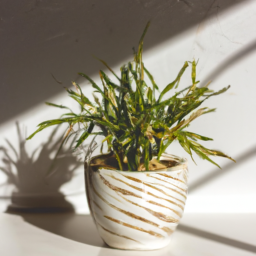
Creative Ideas for Decorating with Potted Plants
Welcome to our guide on creative ideas for decorating with potted plants! In this article, we will explore various ways to incorporate potted plants into your home decor, adding a touch of nature and freshness to your living spaces. Whether you have a green thumb or are new to gardening, these ideas will inspire you to create beautiful and unique displays using potted plants.
1. Indoor Plant Arrangements
Indoor plant arrangements are a fantastic way to bring life and color to any room in your home. Start by selecting a variety of potted plants that thrive indoors, such as ferns, succulents, or peace lilies. Choose plants with different heights, textures, and colors to create an interesting visual display.
One idea is to create a focal point by placing a large potted plant, like a fiddle-leaf fig or a palm tree, in a corner of the room. Surround it with smaller plants in complementary colors and shapes to add depth and dimension to the arrangement.
Another option is to create a hanging plant display using macrame plant hangers or wall-mounted planters. This not only saves space but also adds a unique and eye-catching element to your decor. Consider using trailing plants like pothos or ivy for a cascading effect.
2. Outdoor Plant Decor
Outdoor spaces offer endless possibilities for decorating with potted plants. Whether you have a spacious backyard or a small balcony, you can transform your outdoor area into a lush and inviting oasis.
Start by selecting potted plants that are suitable for your climate and the amount of sunlight your outdoor space receives. Consider using a mix of flowering plants, herbs, and ornamental grasses to add color and texture to your outdoor decor.
If you have a large outdoor area, create a focal point by grouping several potted plants together. You can arrange them on a patio or deck, or even create a dedicated garden bed for your potted plants. Experiment with different heights and plant varieties to create a visually appealing display.
For smaller outdoor spaces, vertical gardening is an excellent option. Use wall-mounted planters or hanging baskets to maximize space and create a vertical garden. This is particularly useful for growing herbs or small flowering plants.
3. Potted Plants as Centerpieces
Potted plants can make stunning centerpieces for your dining table, coffee table, or even your outdoor picnic table. They add a natural and refreshing element to your table decor and can be easily customized to match the theme or season.
Choose a large, statement plant as the centerpiece and surround it with smaller potted plants or decorative elements like candles or small figurines. Consider using plants with vibrant flowers or interesting foliage to create a focal point that grabs attention.
Alternatively, you can create a terrarium centerpiece using a glass container and a variety of small potted plants. This mini indoor garden will add a touch of whimsy and can be easily personalized with decorative rocks or figurines.
Conclusion
Decorating with potted plants is a versatile and creative way to enhance your living spaces. Whether you choose to create indoor plant arrangements, transform your outdoor area, or use potted plants as centerpieces, the possibilities are endless. Remember to select plants that thrive in your specific environment and experiment with different sizes, shapes, and colors to create visually appealing displays. So go ahead, unleash your creativity, and bring the beauty of nature into your home!
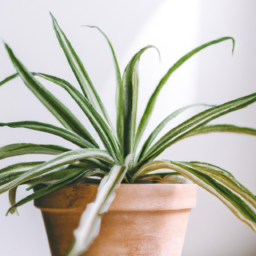
The Best Potted Plants for Beginners with a Black Thumb
Are you someone who has always admired the beauty of potted plants but feared that you have a black thumb? Fret not! Even if you are a beginner with little to no gardening experience, there are plenty of potted plants that are perfect for you. In this article, we will explore five of the best potted plants that are not only easy to care for but also resilient enough to survive even if you forget to water them occasionally. So, let’s dive in and discover the perfect potted plants for beginners like you!
1. Snake Plant (Sansevieria trifasciata)
The Snake Plant, also known as Mother-in-Law’s Tongue, is an excellent choice for beginners with a black thumb. This plant is incredibly resilient and can survive in various light conditions, including low light. It features long, upright leaves with vibrant yellow edges, adding a touch of elegance to any space.
When it comes to care, the Snake Plant is very forgiving. It thrives in well-draining soil and only requires watering every two to three weeks. Overwatering can lead to root rot, so it’s important to let the soil dry out between waterings. Additionally, this plant can tolerate a wide range of temperatures, making it suitable for different environments.
Another great benefit of the Snake Plant is its air-purifying properties. It helps remove toxins like formaldehyde and benzene from the air, promoting a healthier indoor environment. With its low-maintenance nature and aesthetic appeal, the Snake Plant is a must-have for beginners.
2. ZZ Plant (Zamioculcas zamiifolia)
The ZZ Plant is another fantastic choice for beginners who struggle to keep plants alive. This plant has glossy, dark green leaves that grow in a graceful, upright manner. It can tolerate a wide range of light conditions, from low to bright indirect light, making it suitable for various areas in your home.
One of the key reasons why the ZZ Plant is perfect for beginners is its ability to thrive in neglect. It can go for weeks without water and still maintain its lush appearance. Overwatering is the most common mistake made with this plant, so it’s crucial to allow the soil to dry out before watering again.
The ZZ Plant is also known for its air-purifying qualities, helping to remove toxins from the air and improve indoor air quality. This plant is not only easy to care for but also adds a touch of elegance to any space, making it an excellent choice for beginners with a black thumb.
3. Pothos (Epipremnum aureum)
If you’re looking for a trailing plant that is virtually impossible to kill, the Pothos is the way to go. This plant has heart-shaped leaves that come in various shades of green, making it a visually appealing addition to any room. It can thrive in a wide range of light conditions, from low to bright indirect light.
The Pothos is known for its ability to tolerate neglect and still flourish. It can go for weeks without water, and its leaves will droop to indicate when it’s time for watering. This makes it an ideal choice for beginners who may forget to water their plants regularly.
When it comes to care, the Pothos prefers well-draining soil and only needs to be watered when the top inch of the soil feels dry. It can also tolerate occasional overwatering, but it’s essential to avoid waterlogged conditions to prevent root rot.
4. Spider Plant (Chlorophytum comosum)
The Spider Plant is a classic choice for beginners due to its resilience and ease of care. It features long, arching leaves with white stripes, giving it a unique and eye-catching appearance. This plant can adapt to a wide range of light conditions, from bright indirect light to partial shade.
One of the remarkable characteristics of the Spider Plant is its ability to produce “spiderettes” or baby plants that dangle from the main plant. These can be easily propagated and shared with friends or used to expand your indoor garden.
When it comes to watering, the Spider Plant prefers to dry out between waterings. It’s important to avoid overwatering, as it can lead to root rot. This plant also appreciates higher humidity levels, so misting the leaves occasionally can be beneficial.
5. Aloe Vera (Aloe barbadensis)
If you’re looking for a potted plant with additional benefits, Aloe Vera is an excellent choice. Not only does it add a touch of green to your space, but it also offers medicinal properties. Aloe Vera has succulent leaves filled with a gel-like substance that can be used to soothe burns, cuts, and other skin irritations.
The Aloe Vera plant thrives in bright indirect light and should be placed near a sunny window. It prefers well-draining soil and only needs to be watered when the top inch of the soil feels dry. Overwatering can cause the roots to rot, so it’s crucial to let the soil dry out between waterings.
In addition to its healing properties, Aloe Vera is a low-maintenance plant that can tolerate some neglect. It’s a great choice for beginners who want a potted plant that not only looks beautiful but also serves a practical purpose.
Conclusion
As a beginner with a black thumb, you don’t have to be intimidated by potted plants anymore. The five plants mentioned above – Snake Plant, ZZ Plant, Pothos, Spider Plant, and Aloe Vera – are perfect for beginners due to their resilience, low-maintenance nature, and ability to survive occasional neglect. These plants not only add beauty to your space but also purify the air and offer additional benefits such as healing properties.
Remember, caring for potted plants is a learning process, and it’s normal to make mistakes along the way. With time and practice, you’ll become more confident in your gardening skills. So go ahead, choose the potted plant that appeals to you the most, and embark on your journey as a plant parent!
Potted plants are a popular choice for adding a touch of nature and greenery to any indoor or outdoor space. These small, portable plants are easy to care for and can thrive in a variety of environments. In this blog post, we will explore the benefits of having potted plants in your home or office, as well as provide tips on how to choose the right plant and care for it effectively.
One of the main advantages of potted plants is their ability to improve indoor air quality. Plants naturally absorb carbon dioxide and release oxygen, making them excellent natural air purifiers. They can also help to increase humidity levels, which is especially beneficial in dry climates or during the colder months when heating systems can dry out the air. Additionally, studies have shown that having plants in your surroundings can reduce stress levels and improve overall mood and productivity.
When it comes to selecting the perfect potted plant, it’s important to consider factors such as lighting conditions, space availability, and personal preferences. Some plants, like succulents, thrive in sunny spots with minimal watering, while others, such as ferns, prefer indirect light and more regular watering. It’s also essential to choose the right size of pot and provide proper drainage to prevent overwatering and root rot. Regular watering, fertilizing, and occasional pruning are key to maintaining a healthy and vibrant potted plant.
In conclusion, potted plants are not only aesthetically pleasing but also offer numerous benefits for your well-being and indoor environment. With a wide variety of plants to choose from and simple care requirements, anyone can enjoy the beauty and benefits of potted plants in their home or office. So, why not bring a touch of nature indoors and enhance your living or working space with these delightful green companions?
Here are some questions from our readers:
Q1: What is a potted plant?
A1: A potted plant refers to a plant that is grown in a container, typically made of plastic, ceramic, or clay, instead of being planted directly in the ground.
Q2: How do I choose the right potted plant?
A2: When selecting a potted plant, consider factors such as the amount of sunlight it requires, the available space in your home or garden, and your level of gardening experience. Additionally, take into account the plant’s water and care needs, as well as its growth habits and potential size.
Q3: What are the benefits of having potted plants?
A3: Potted plants offer numerous benefits, including improving indoor air quality, reducing stress levels, enhancing mood, increasing productivity, and adding beauty to your living space. They can also serve as natural decorations and contribute to a healthier environment.
Q4: How often should I water my potted plant?
A4: The watering frequency for potted plants varies depending on factors like plant type, pot size, and environmental conditions. Generally, it’s best to water when the top inch of soil feels dry to the touch. Avoid overwatering, as it can lead to root rot, while underwatering may cause the plant to wither.
Q5: Can I keep potted plants indoors?
A5: Yes, many potted plants can thrive indoors. However, it’s essential to choose plants that are suitable for the available light conditions in your home. Some common indoor plants include succulents, pothos, snake plants, and peace lilies.
Q6: How do I fertilize my potted plant?
A6: Fertilizing potted plants helps provide them with essential nutrients. Use a balanced, water-soluble fertilizer and follow the instructions on the packaging for the correct dosage and frequency. It’s generally recommended to fertilize during the plant’s active growing season, which is typically spring and summer.
Q7: What are some common pests and diseases that affect potted plants?
A7: Common pests that may affect potted plants include aphids, spider mites, mealybugs, and fungus gnats. Diseases such as root rot, powdery mildew, and leaf spot can also occur. Regularly inspect your plants for signs of pests or diseases and take appropriate measures, such as using organic pest control methods or seeking advice from a local garden center.
Q8: Can I repot my potted plant?
A8: Yes, repotting is often necessary to provide your potted plant with fresh soil, more space for root growth, and better drainage. It’s generally recommended to repot every 1-2 years or when the plant becomes root-bound, meaning the roots have filled the pot completely.
Q9: How do I care for potted plants during winter?
A9: The care requirements for potted plants during winter depend on the specific plant species. Some plants may need to be brought indoors to protect them from freezing temperatures, while others can tolerate cold weather. Research the specific needs of your plant and provide appropriate protection, such as insulation or moving them to a sheltered area.
Q10: Can I grow vegetables or herbs in potted plants?
A10: Absolutely! Many vegetables and herbs can be successfully grown in potted plants. Choose varieties suitable for container gardening, provide adequate sunlight, water, and nutrients, and follow proper planting and care instructions. This allows you to enjoy fresh produce even if you have limited garden space.
Emily Bloomfield is an interior designer and horticulturist specializing in incorporating indoor plants into interior spaces. With a background in both design and plant science, Emily offers a unique perspective on creating harmonious living environments through the synergy of greenery and aesthetics. Her creative ideas and innovative solutions make her a sought-after authority in the field.

